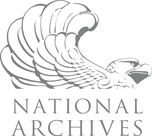 Publicador de conteúdo web
Publicador de conteúdo web
December 7 and September 11 - Infamy Twins?
Objective: By viewing the re-mastered video presentation of President Roosevelt’s December 8, 1941 address to the Joint Session of Congress and gathering, analyzing and synthesizing information from audio, video and traditional print documentary primary sources, students will discover how the events on the morning of December 7th 1941 in Hawaii and the events on the morning of September 11, 2001 in New York, Pennsylvania and Washington D.C. impacted how the government and the people of the United States worked, lived and thought then and in the years that followed.
Grade Level: 6-12
Compelling Questions:
- How did the “Day of Infamy” change US and World History?
- What lessons can we learn from two of the most tragic days in American history?
Historic Significance: December 7, 1941 and September 11, 2001 are similar in that on those two days the way America thought about its self and its position in the world changed dramatically and irreparably. We had thought our country was safe from the turmoil and violence that occurred elsewhere in the world: those two days brought us into war and a shocking new realization about just how vulnerable we are.
Materials: Re-mastered video presentation of President Roosevelt’s December 8, 1941 address to the Joint Session of Congress and primary and secondary audio, video and documentary sources drawn from the Roosevelt Library and Museum’s website, the Library’s archives, and other internet websites, books, magazines and comparison sheet. For a copy of the film, please send your mailing address to Jeffrey.Urbin@nara.gov.
Procedure:
- Share with your students the re-mastered video presentation of President Roosevelt’s December 8, 1941 address (the Day of Infamy speech) to the Joint Session of Congress.
- Allow students time to research, gather, and analyze information about the attack at Pearl Harbor and the attacks on September 11th.
- Ask your students to fill in the chart comparing how the two events were similar and different.
- Ask your students what lessons can we learn from those fateful days?
- Ask your students to consider how the lessons are being applied to our world today?
- Discuss how these lessons impacted the 2016 presidential election, and how they may be played out in the next administration.
Supporting Questions:
- How did each of these events change America?
- What similarities and differences can be made regarding the December 7, 1941 and September 11, 2001 attacks?
- What were each of the attackers trying to achieve?
- To what extent did the attackers achieve their goals?
- Why did the attackers select these specific targets?
- In what ways could/should we have been more prepared for these attacks?
- What lessons can we learn from these events?
Concluding Activity: Ask your students to write a brief summary describing their comparison of the two events with a focus on: a) what went wrong in terms of anticipating and preventing the attacks and b) the lessons we can learn from the two events.
One Step beyond: Locate summaries of the reports looking into the attack at Pearl Harbor and the September 11th attacks. How do your students findings and conclusions compare to those official reports?



